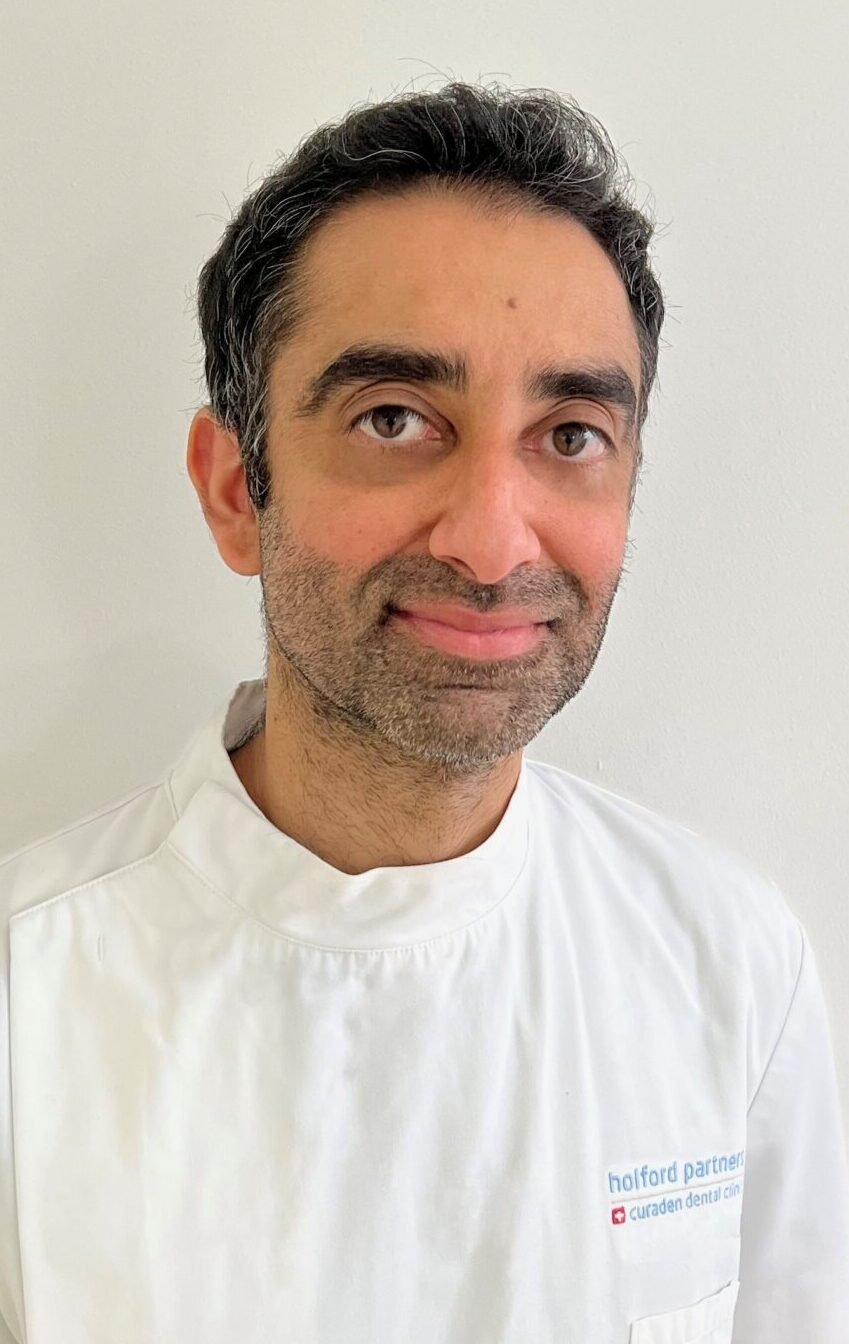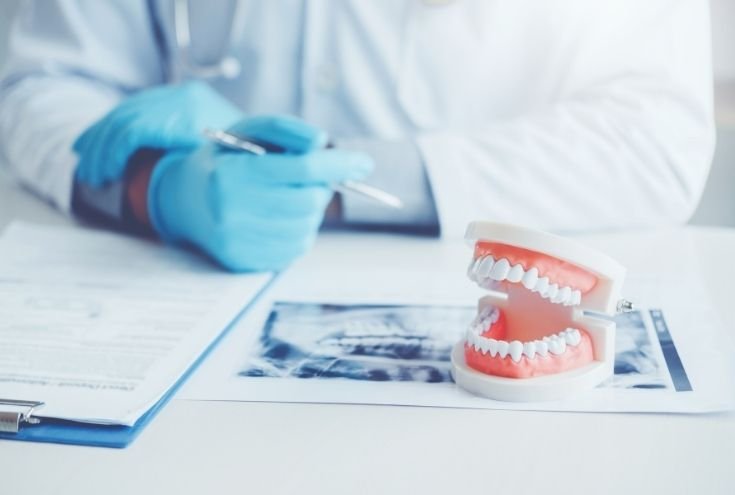

Root Canal Treatment
Root canal treatment, also known as Endodontics, is the treatment of the pulp at the centre of the tooth which has become infected. Root canal treatment involves the removal and elimination of the infection and protection of the decontaminated tooth from future microbial infection.
The pulp is a soft mass of tissue within the root that provides nutrients to the tooth to keep it healthy. The pulp contains nerves which when an infection occurs from decay or injury may cause an abscess and toothache. Root canal treatment involves removing the dead pulp and filling the remaining space to reinforce the tooth.
The procedure is totally pain-free and will save your tooth from needing to be removed completely.
Root Canal Treatment
Root canal treatment, also known as Endodontics, is the treatment of the pulp at the centre of the tooth which has become infected. Root canal treatment involves the removal and elimination of the infection and protection of the decontaminated tooth from future microbial infection.
The pulp is a soft mass of tissue within the root that provides nutrients to the tooth to keep it healthy. The pulp contains nerves which when an infection occurs from decay or injury may cause an abscess and toothache. Root canal treatment involves removing the dead pulp and filling the remaining space to reinforce the tooth.
The procedure is totally pain-free and will save your tooth from needing to be removed completely.

BEFORE & AFTERS
Root canal treatment should remove your pain and discomfort and in turn save the tooth from being extracted. The pain is mainly caused by an infection, inflammation or abscess.
How can the pulp/centre of a tooth (the root canal) become infected?
An infection can occur from:
– Leaky fillings
– Tooth decay
– Damage to your teeth from trauma
The bacteria that live in the mouth will invade these vulnerable teeth.
When is a root canal treatment required?
When your dentist will be able to determine from your dental x-rays that the tooth’s pulp has been damaged by an infection. If a bacterial infection is present then this may lead to the pulp becoming inflamed and allow the bacteria to multiply and spread.
Symptoms of a possible pulp infection can include:
– Pain when biting or chewing
– A loose tooth
– Pain when eating/drinking hot or cold food/drink
The symptoms will appear to subside as the infection progresses and kills off the pulp, however this feeling of the tooth healing usually means that the infection has entered through the root canal system. Symptoms will then occur again such as:
– Pain upon biting and chewing
– Swollen cheek or jaw
– Pus oozing from the infected tooth
– Swollen gum near the infected tooth
– The tooth may become darker in colour
It is vital that you see your dentist if begin to develop toothache. If your tooth becomes infected, then the pulp is not able to heal itself. It is better to treat the tooth before the infection becomes to established as the root canal treatment is less likely to be successful. Antibiotics, which are used to treat bacterial infections, has no real effect in treating infected root canals. They are effective in treating an infection which has spread beyond the root which causes facial swelling.
What is involved?
An x-ray will be taken to diagnose if there is a bacterial infection present and recommend if root canal treatment is required. To treat the root canal infection, the bacteria will need to be removed from the root canal system. The other alternative is removing the tooth if the infection is too far gone. Removing the tooth is always a last resort as we will always try to save the tooth. It is much better to keep as many of your natural teeth as possible.
Before your root canal treatment you will given a local anaesthetic so you don’t feel a thing. The procedure should be painless and an opportunity for you to relax in the dental chair while your dentist performs the treatment.
Once the bacteria has been successfully removed, then the root canal is filled and sealed with a composite filling. Sometimes a crown is necessary to reinforce the tooth. The inflamed tissues around the root treated tooth should settle and heal by themselves. After a successful root canal treatment, the tooth can usually last up to 10 years following the treatment.
THE ROOT CANAL TREATMENT PROCESS
Your treatment will usually be spread across 2 appointments. During the first appointment your dentist will prepare the tooth, remove the pulp, clean out the root canals and fill them with a temporary filling. The second appointment will be to remove the temporary filling, place a permanent filling and seal the tooth. A crown is sometimes required to prevent the tooth from fracturing.
1. Root Canal Treatment Preparation
Before your dentist can determine whether a root canal treatment is required, they will take x-rays of the symptomatic tooth. They will then be able to assess the extent of any damage caused by the infection. Root canal treatment is usually carried out under local anaesthetic, which numbs the affected tooth and the area around it.
2. Pulp Removal
To ensure the tooth is kept dry during your root canal treatment a rubber dam will be set up. This will also act as a precautionary barrier to avoid swallowing or breath in any of the products and materials used by your dentist. Once your dentist has drilled through the top biting surface of your tooth to access the soft tissue known as the pulp, they will begin to remove all that remains of the infected tissue. If a dental abscess (a pus-filled swelling) is present then we will be able to drain and flush it out during your appointment.
3. Cleaning the Root Canal(s)
Once the entire pulp has been removed by your dentist, they will proceed by cleaning the root canals. As root canals are usually very narrow, your dentist will enlarge them ever so slightly enlarged to make it easier to fill them.
A series of small files will be used to enlarge the root canals prior to them being filled. This is the most time consuming part of the treatment.
Depending on which tooth requires treatment will determine the number of canals will need to be treated. Usually your front 4 incisors and canines (anterior teeth) will have a single root with just one root canal. Your premolars and back molars (posterior teeth) have 2 or 3 roots which usually have 1-2 root canals in each root.
Naturally, teeth with more root canals will require a longer appointment to complete and may sometimes require an additional appointment. Sometimes a small amount of medication will be placed inside the now empty and clean root canals to kill any remaining bacteria. The root treated tooth will then be sealed with a temporary filling. If your symptoms from the infection include raised temperature or large swelling then you may be given antibiotics to manage and prevent the spread of the infection.
4. Filling and Prepping the Tooth
Your second visit will involve the removal of the temporary filling and medicine from inside the root canals before the permanent filling is inserted. This will seal the tooth and canals to prevent another infection.
Root-filled teeth are weaker and are more likely to break than healthy natural teeth. To strengthen your root-filled tooth, your dentist may recommend restoring the tooth with a crown. If your tooth has died as a result of trauma then there is a higher chance of the tooth becoming darker. This discolouration can be treated by an internal whitening treatment.
5. Fitting the Crown
A crown is a dental restoration that completely covers the tooth above the gum. It is usually necessary to place a crown after root canal treatment to prevent the tooth from fracturing or breaking. Crowns can be made from a variety of materials such as porcelain, zirconia, e-max or a combination of porcelain fused to metal.
Your dentist will begin by numbing the area so you don’t feel any pain or discomfort. They will reduce the size of your tooth with a drill to allow the new crown to fit your tooth accurately and so that it is flush with your other teeth and bite. An impression or 3D digital scan will then be taken for our dental technicians to create your new crown. You will be fitted with a temporary crown to protect the tooth.
We will then need you to visit the clinic for one final appointment to finish the treatment and fit the permanent crown. If there isn’t much of the tooth left above the gum level after the root canal treatment then a post can be cemented into the root canal and used as an anchor to keep the crown in place.
When recovering from a root canal treatment it is important to look after your teeth and avoid biting into hard foods until the treatment has been completed. Once the final stage of your root canal is finished, it is normal to feel a little sore for a few days but there should no longer be any pain. Painkillers can be taken to relieve any dull discomfort but if your pain or swelling persists then you should see your dentist who can prescribe antibiotics if required.
After the procedure you should avoid the following:
– Popcorn as there may be unpopped kernels which can easily break a tooth
– Hard food such as nuts
– Crunchy foods such as crusty bread or pretzels
– Hot foods and drinks until the anaesthetic has worn off
– Sticky foods such as caramels, toffees and gum
– Chewy foods such as steak
You can avoid the need for further root canal treatment by:
– Maintaining good oral hygiene and regular visits to your dentist and hygienist
– Reducing your sugar intact and rinsing your mouth with water after having sugary food or drink
– Stop smoking
– Wear a mouth guard when playing contact sports to prevent trauma and injury to your teeth
– Floss once daily
How much does a root canal treatment cost?
The price can vary due to complexity of your case and the number of root canals that are present in the tooth in question. A crown is not always clinically necessary but your dentist will be able to advise once you have seen them for an initial assessment.
ROOT CANAL TREATMENT (per tooth) ……………….. from £900 – £1350
CORE BUILD UP / PINS (per tooth) ……………….. from £250
CROWNS (per tooth) ……………….. from £1200
BEFORE & AFTERS
Who offers root canal treatment?
Get Back To Your Busy Schedule Pain-Free
If the decay is left untreated for too long then a root canal treatment may be your only option to save the tooth.
Having toothache and being in pain can really disrupt your day to day life so why suffer for longer than you need to. Book an appointment now so we can alleviate your symptoms through endodontics as soon as possible.
Fortunately we have some of the greatest skilled dentists, who are able to perform endodontic treatment and get you out of trouble, allowing you to get on with your life pain-free.
In Pain Or Discomfort?
We advocate prevention to avoid oral health problems, but if you are experiencing pain or discomfort right now, we can remove that problem for you as early as possible. Don’t wait until your next check-up!
Eliminating Pain
&
Saving Teeth
EXPERT DIAGNOSIS
Our top expert dentists use only the best tools and equipment for diagnosing issues with your teeth. We will make sure that no problem is left unseen and alleviate your symptoms.
EXCELLENT MATERIALS
We use the highest quality materials and the latest technology available to perform out root canal treatments, giving you the best possible chance for long lasting results.
QUALITY GUARANTEED
At Holford Partners Curaden we guarantee long-lasting results, free from pain both during and after treatment allowing you to get on with your life.
Eliminating Pain
&
Saving Teeth
EXPERT DIAGNOSIS
Our top expert dentists use only the best tools and equipment for diagnosing issues with your teeth. We will make sure that no problem is left unseen and alleviate your symptoms.
EXCELLENT MATERIALS
We use the highest quality materials and the latest technology available to perform out root canal treatments, giving you the best possible chance for long lasting results.
QUALITY GUARANTEED
At Holford Partners Curaden we guarantee long-lasting results, free from pain both during and after treatment allowing you to get on with your life.
Frequently Asked Questions
Root canal treatment is completely painless contrary to what people expect and build up in their mind. They are the best treatment to get relief from the discomfort of an infected tooth that would otherwise be removed. The procedure will involve a topical anaesthetic prior to the local anaesthetic which will numb the whole area. You won’t feel a thing.
On average a root canal treatment will last between 1 to 2 hours. Usually treatment can be completed in one visit however in some cases you may be required to return for an additional appointment to complete the treatment. This is included in the cost of treatment.
A crown is not always clinically necessary following root canal treatment. The need for a crown is usually determined by how much of the tooth structure is remaining post treatment. You will typically require a crown following root canal treatment if more than half of the tooth’s structure is removed to fortify the tooth and protect it.
You will be given a local anaesthetic to numb the area during treatment. Once the procedure has finished, you will be able to return to work straight after. You should avoid any strenuous activities and take it easy. Hot drinks and food should not be consumed until the anaesthetic has worn off otherwise you will risk burning yourself. Until the root canal treatment has been fully completed you should avoid chewing or biting into hard foods.
You should avoid the following:
– Popcorn as there may be unpopped kernels which can easily break a tooth
– Hard food such as nuts
– Crunchy foods such as crusty bread or pretzels
– Hot foods and drinks until the anaesthetic has worn off
– Sticky foods such as caramels, toffees and gum
– Chewy foods such as steak
For children, you will see that permanent teeth are slightly darker than milk teeth. This is a sign of stronger enamel.
They are also susceptible to fluorosis, a condition that occurs because of an excess of fluoride from water and dental products in the first eight years of their life. That’s the reason why children’s toothpaste doesn’t contain fluoride.
For most people, the common reason for yellowed or darkened teeth can be down to diet or lifestyle choices. Colourful food such as tomato sauces or curries, tea, coffee and smoking will gradually darken and discolour your teeth.
As we age, we will also experience our teeth getting gradually darker.
For sportspeople excessive trauma or constant knocking of the teeth will cause nerve damage inside the tooth. This will cause the nerve to eventually die creating a dark tooth that can only be whitened internally after root canal treatment.
The cost of crowns and bridges widely vary depending on the material and the quantity.
There are many alternatives to crowns and bridges but when you compromise on quality then the crowns and bridges will not last as long. As a result you will end up spending more in the long term for replacements which could have been avoided if you had chosen the slightly more expensive/longer lasting treatment. It all comes down to quality of life and you don’t want to have unnecessary replacements sooner than you should. You also want a crown or bridge that will look natural and blend in with your other teeth. Cheaper alternatives can often be obvious and look foreign in your mouth which can knock your confidence when you smile.
The best thing you can do to avoid additional costs for dental replacements is preventive care. Regular check-ups, professional hygiene cleans, excellent oral care habits, proper diet and nutrition will get you a long way.






